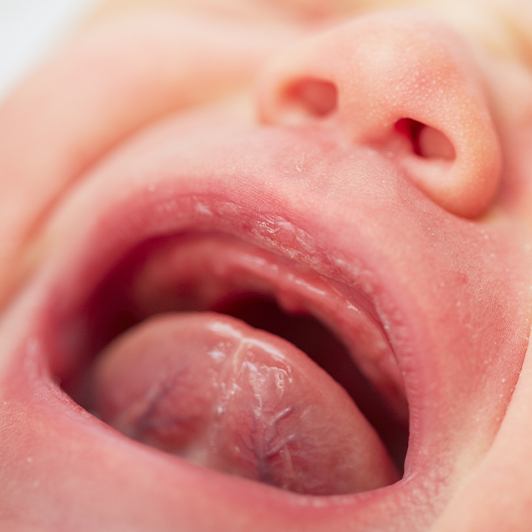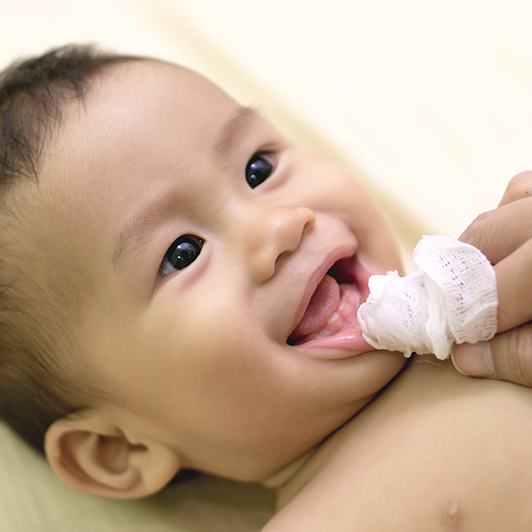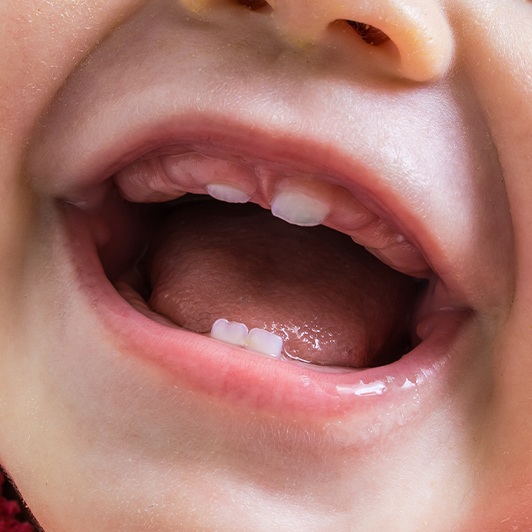Lip & Tongue-Tie Glossary – Phillipsburg, NJ
Understanding Basic Lip & Tongue-Tie Terms
There is a lot of unfamiliar terminology associated with lip and tongue-ties, and this can make it difficult for parents to understand exactly what is troubling their child or what can be done about it. Seeing terms like frenectomy and ankyloglossia while doing research online can easily lead to confusion and stress. That’s why Dr. Garcia-DeMartino strives to empower our patients with the knowledge they need. Below, you’ll find our lip and tongue-tie glossary for Phillipsburg, NJ patients and parents, containing the definitions for some of the most common terms related to these conditions. If you have any questions, or if you’d like to schedule a consultation and discuss your child’s treatment options, contact us today.
Why Choose Dr. Garcia-DeMartino for Lip & Tongue-Tie?
- Nearly 20 Years of Laser Frenectomy Experience
- Proud Mother of 4 Who Sympathizes with Parents
- Friendly Dental Office with Private Nursing & Post Op Rooms
Frenum / Frenulum (Frenulums / Frenula / Frena)

All of these terms refer to a small band of oral tissue that connects each lip to the gums and the tongue to the floor of the mouth. They appear during fetal development and are supposed to gradually shrink through a process called apoptosis, which then allows the lips and tongue to function freely. Frenulum and frenum refer to a single band of tissue, while multiple tissues can be called frenulums, frenula, or frena.
Tongue-Tie

This is a condition where the movement of the tongue is restricted because the frenulum that attaches it to the floor of the mouth is too short or thick. This can impede basic functions likes speaking and eating, and it can make things especially difficult for nursing infants by preventing them from latching onto the nipple.
Lip-Tie

Each lip is attached to the gums via a frenulum. Similar to a tongue-tie, a lip-tie occurs when these tissues impede the movement of the lips. In addition to making it difficult for an infant to nurse, lip-ties can also lead to dental issues down the line, causing a noticeable space to develop between the two front teeth, which can cause aesthetic and speech concerns.
Lip and Tongue-Tie

The two conditions can often develop at the same time, and fortunately for clarity’s sake, this is just referred to as “lip and tongue-tie.”
Buccal-Tie

This term describes short, hard, or inflexible tissues on the sides of the mouth that connect the cheeks to the bones and jawbone. This is much less common than lip and tongue-ties.
Ankyloglossia

This is the scientific term for a tongue-tie.
Tethered Oral Tissues (TOTS)

While “tots” is often a term of endearment for toddlers, TOTS is an acronym that refers to lip, tongue, and buccal-ties. It is most often used when discussing these conditions in reference to infants and young children.
Frenectomy / Frenotomy / Frenulectomy

These all refer to the procedure used to treat a lip or tongue-tie, in which a small amount of connective tissue is removed in order to free up the movement of the lips and tongue. They are often used interchangeably, but they are the same thing in practice. The treatment is traditionally performed with surgical scissors, but Dr. Garcia-DeMartino is able to provide fast and comfortable laser frenectomies that are much more precise and safer, particularly for infants.
